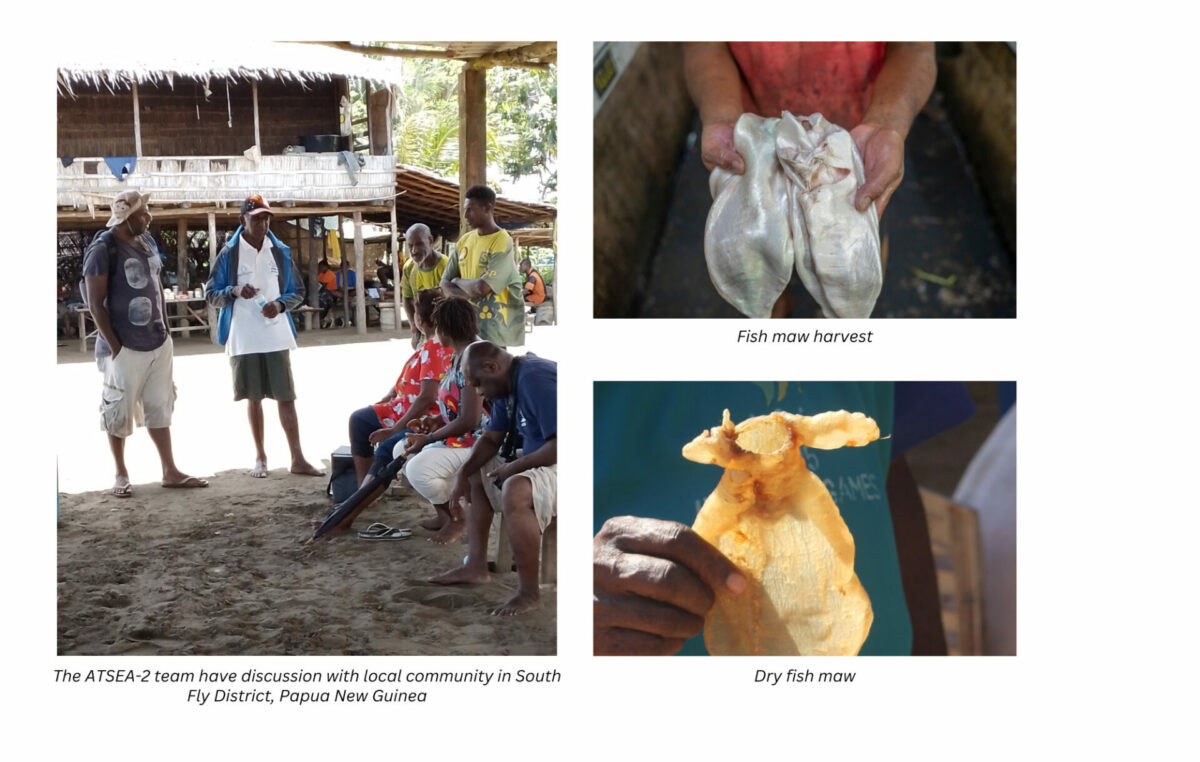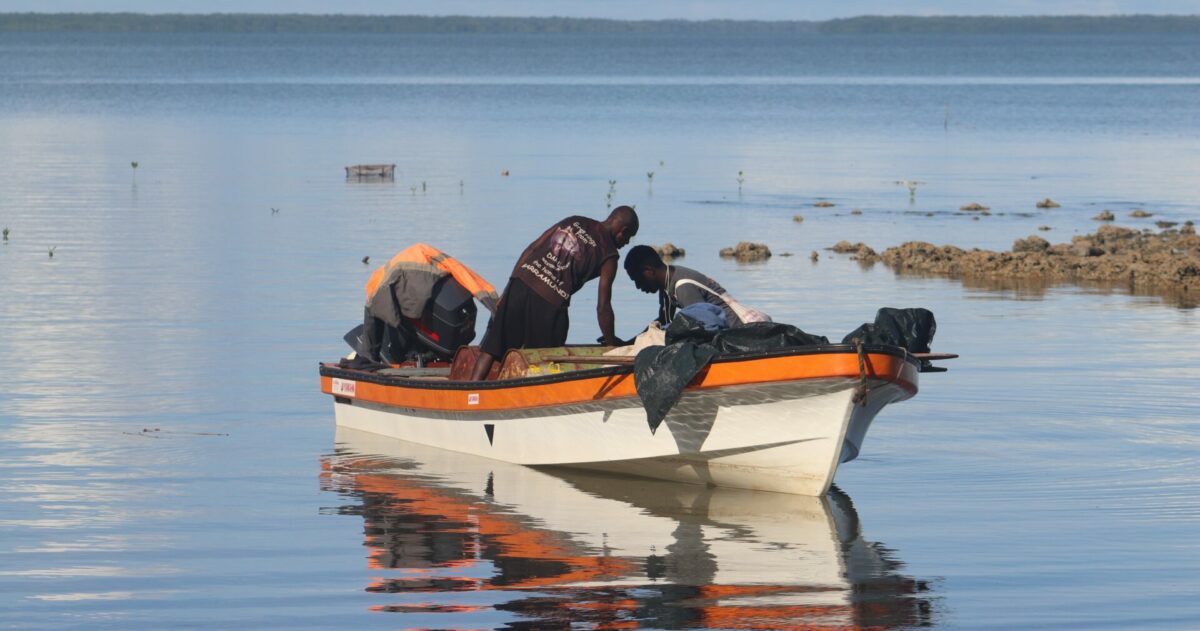Exploring the Fore Coast in South Fly district is an enchanting experience. Navigating the tranquil intertidal waters, visitors discover pristine beaches and mangroves. The outboard motor hums continuously, as we pass by anglers in their canoes and vigilant boat spotters, who ensure their skipper steers clear of fishing nets. The ATSEA-2 team has had the privilege of traversing this coastline multiple times, collecting valuable data and raising awareness. Nevertheless, the magic remains, with every visit as captivating as the very first time.
The intertidal waters here are increasingly dotted with fishing nets, crab traps and canoes carrying anglers, particularly in areas close to villages. The intensification of fishing activities in these narrow coastal waters has been fuelled by the rising human population and their close proximity to the international border with Australia.
One specific activity that has become more prevalent along the Fore Coast is the harvesting of fish maw – part of a wider intensification of fishing in the area. Increased fishing activities have led to a decline in fish populations and other noteworthy environmental impacts. There is evidence in the Daru market of an increase in the harvest and sale of Endangered, Threatened and Protected (ETP) bycatch.
Traditional practices protecting fishing grounds

To combat overfishing, various villages have taken initiatives to protect their fishing grounds. For instance, villagers in Parama strictly forbid settlers in Daru town and neighbouring villages from fishing on their home reefs. The enforcement of spatial and temporal closures of fishing grounds is carried out by clan elders through traditional practices.
In Papua New Guinea, a “sabi” area is a special fishing zone protected by local customs. It’s an area where fishing is limited or completely stopped for a certain time to let fish populations recover and ensure their long-term survival. The decision to establish a sabi area and its rules are usually made by the local communities or clan elders who have traditional rights over the fishing grounds.
To enforce the closure, a ceremony takes place in the fishing area. A pole is planted in the ground and decorated with grass and symbolic items. During the ceremony, a spell is invoked to discourage fishing in the area during the designated time. Breaking the spell or violating the taboo is believed to have spiritual consequences or curses. Fishing is only allowed after the sabi is officially lifted by the same clan elder.
These sabi areas and their rules are deeply rooted in local traditions, customs and spiritual beliefs. They play a vital role in customary fisheries management, aiming to regulate fishing, safeguard fish stocks and maintain a healthy marine environment.
Developing an artisanal fisheries management plan

The ATSEA-2 Project is helping communities to develop and implement an artisanal fisheries management plan. This involves raising awareness and conducting training sessions on an Ecosystem Approach to Fisheries Management (EAFM), while also gathering information from the communities about their fisheries and customary or contemporary management practices. This information is then incorporated into the Fore Artisanal Fishery Management Plan (FAFMP), along with relevant measures taken from national regulations.
The FAFMP includes various measures aimed at addressing the decline in fish populations and ensuring long-term sustainability. Some of the management measures adopted from national regulations include restrictions on fishing net size for barramundi, fish size limitations and temporal fishing restrictions. Additionally, measures derived from local practices are included, such as establishing sabi areas.
Challenges and next steps
The development of the fisheries management bill is being supported by a legal consultant. They are helping to translate the management measures outlined in the management plan into a bill that will be enacted as law, thereby providing a legal framework for implementing the management plan in the communities. An emphasis is placed on ensuring the bill aligns with local needs and practices while adhering to national regulations.
There are a number of challenges associated with implementing the management plan and passing the fisheries management bill, which can be time-consuming and complicated. To expedite this process, a team of individuals with relevant expertise will be supported by a lawyer who will help to streamline the proceedings. Additionally, addressing the challenge of implementing the plan requires conducting more awareness campaigns to gain buy-in from community members. This approach aims to empower communities to take ownership and implement the management plan effectively, thereby managing their resources with minimal external support.
By Kenneth Yhuanje


